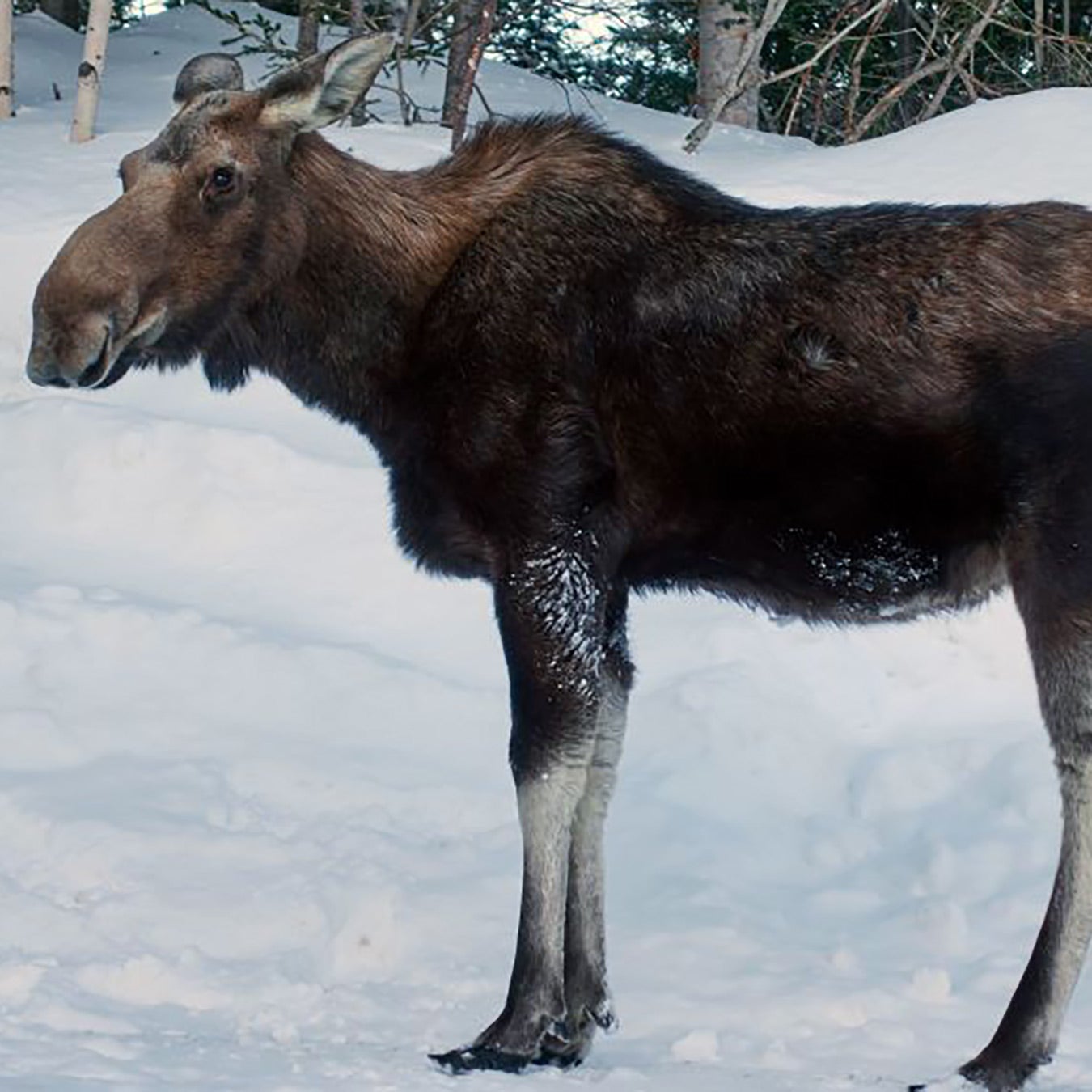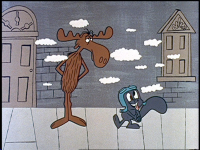BadMedicine
Would *I* Lie???
Iditarod racer Dallas Seavey says he shot moose in defense of dogs
By Zachariah Hughes
Updated: 6 hours agoPublished: 18 hours ago

 abcnews.go.com
abcnews.go.com
Five-time champion Dallas Seavey drives his dog team across Long Lake during the Iditarod restart in Willow on Sunday, March 3, 2024. (Bill Roth / ADN)
Five-time Iditarod Trail Sled Dog Race champion Dallas Seavey shot and dressed a moose that was tangled up with his dog team early Monday morning, less than 24 hours into this year’s race.
Race officials around 1:43 a.m. were notified of the incident, which happened around 14 miles up the trail from the checkpoint at Skwentna on the way to Finger Lake, the Iditarod Trail Committee said in a statement Monday afternoon.
“It was on a downhill. I mean, it fell on my sled, and it was sprawled on the trail,” Seavey said in a short video posted on Iditarod Insider, the race’s media arm for paying subscribers.
Seavey said he notified race director Mark Nordman via an InReach messaging device, and proceeded to do what the event’s rulebook requires in cases where mushers are forced to dispatch edible wildlife.
“I gutted it as best I could, but it was ugly,” Seavey said at the Finger Lake checkpoint.
According to the Iditarod Trail Committee statement, the moose “became entangled with the dogs and the musher on the trail” before Seavey dispatched the animal in self-defense. He rested his dogs on the way to the Finger Lake checkpoint, where he dropped a female named Faloo who was injured in the incident, said a post on his Facebook page.
Under the Iditarod’s Rule 34, if a musher kills an edible big game animal in defense of life and property, “the musher must gut the animal and report the incident to a race official at the next checkpoint. Following teams must help gut the animal when possible. No teams may pass until the animal has been gutted and the musher killing the animal has proceeded.”
The run from Skwentna to Finger Lake, which speedy mushers do in around five hours, took Seavey eight hours and 14 minutes, though it is unclear how much of that time was spent gutting the moose carcass or if any other mushers happened upon him and helped.
According to Iditarod Insider analyst and race veteran Bruce Lee, Seavey said the incident threw a wrench in his planned run-rest schedule, although he stayed just six minutes in the Finger Lake checkpoint where veterinarians had the chance to look at his dogs.
“The Alaska troopers have been notified, the meat will be salvaged,” Lee said in a video.
Austin McDaniel, a spokesperson for the Alaska State Troopers, said in an email Monday that troopers were aware of the encounter “and are reviewing it to ensure that Alaska’s laws concerning taking game in defense of life and property were followed.”
Lee also said in the video that “the moose is lying in the trail, some of the other mushers have had to go over it like a snow drift.”
One of those other mushers was veteran Paige Drobny, who was the third racer to arrive into Finger Lake a little before 6 a.m. Tuesday.
“It’s dead in the middle of the trail,” Drobny told a race checker in a video of her arrival. “My team went up and over it, it’s that in the middle of the trail.”
Less than two hours earlier when Jessie Holmes was the first musher to arrive at the checkpoint, he reported that he’d also had an encounter with a moose, one that was very much alive.
“I had to punch a moose in the nose out there. Oh my gosh,” Holmes said.
[On the first full day of the Iditarod, mushers ascend the Alaska Range in fuzzy conditions]
Rookie Gabe Dunham was the fourth racer to reach Finger Lake.
“There happened to be a dead moose in the trail, that kinda flipped the sled. I did laugh and think, ‘Man, even when they’re dead they’re still getting me,’” she said in an interview with Insider.
Based on what racers told Insider, the moose appeared to be located around a blind corner in a section of switchbacks, making the obstacle all but impossible to avoid or navigate away from.
“That was the experience of a lifetime. I can’t say I’ve ever run a 16-dog team over a moose, so that was kind of interesting,” said musher Bailey Vitello, who added that he was leery of stopping his sled lest his dogs rip into the carcass. “Don’t know if I want to do it again.”
Snowmachiners in the area around the kill site were helping “to utilize and salvage the moose meat,” according to race marshal Warren Palfrey.
News of the incident was still trickling out over the course of Monday, which also happened to be Seavey’s 37th birthday.
“With the well-being of his team in mind, Dallas made the tough decision to fell the moose, resulting in a setback for his progression the trail,” said a post on Seavey’s official Facebook page. “Iditarod officials swiftly organized assistance to handle the aftermath, contacting the authorities and confirming the preservation of the animals meat.”
Though animal encounters are not uncommon in Iditarod, rarely do they end in death.
By Zachariah Hughes
Updated: 6 hours agoPublished: 18 hours ago

Iditarod race musher forced to fatally shoot 'angry' moose in wild encounter on the course
Iditarod race musher Dallas Seavey was forced to fatally shoot and gut what he described as an "angry moose" that became entangled with his team of dogs.
Five-time champion Dallas Seavey drives his dog team across Long Lake during the Iditarod restart in Willow on Sunday, March 3, 2024. (Bill Roth / ADN)
Five-time Iditarod Trail Sled Dog Race champion Dallas Seavey shot and dressed a moose that was tangled up with his dog team early Monday morning, less than 24 hours into this year’s race.
Race officials around 1:43 a.m. were notified of the incident, which happened around 14 miles up the trail from the checkpoint at Skwentna on the way to Finger Lake, the Iditarod Trail Committee said in a statement Monday afternoon.
“It was on a downhill. I mean, it fell on my sled, and it was sprawled on the trail,” Seavey said in a short video posted on Iditarod Insider, the race’s media arm for paying subscribers.
Seavey said he notified race director Mark Nordman via an InReach messaging device, and proceeded to do what the event’s rulebook requires in cases where mushers are forced to dispatch edible wildlife.
“I gutted it as best I could, but it was ugly,” Seavey said at the Finger Lake checkpoint.
According to the Iditarod Trail Committee statement, the moose “became entangled with the dogs and the musher on the trail” before Seavey dispatched the animal in self-defense. He rested his dogs on the way to the Finger Lake checkpoint, where he dropped a female named Faloo who was injured in the incident, said a post on his Facebook page.
Under the Iditarod’s Rule 34, if a musher kills an edible big game animal in defense of life and property, “the musher must gut the animal and report the incident to a race official at the next checkpoint. Following teams must help gut the animal when possible. No teams may pass until the animal has been gutted and the musher killing the animal has proceeded.”
ADVERTISMENT
The run from Skwentna to Finger Lake, which speedy mushers do in around five hours, took Seavey eight hours and 14 minutes, though it is unclear how much of that time was spent gutting the moose carcass or if any other mushers happened upon him and helped.
According to Iditarod Insider analyst and race veteran Bruce Lee, Seavey said the incident threw a wrench in his planned run-rest schedule, although he stayed just six minutes in the Finger Lake checkpoint where veterinarians had the chance to look at his dogs.
“The Alaska troopers have been notified, the meat will be salvaged,” Lee said in a video.
Austin McDaniel, a spokesperson for the Alaska State Troopers, said in an email Monday that troopers were aware of the encounter “and are reviewing it to ensure that Alaska’s laws concerning taking game in defense of life and property were followed.”
Lee also said in the video that “the moose is lying in the trail, some of the other mushers have had to go over it like a snow drift.”
One of those other mushers was veteran Paige Drobny, who was the third racer to arrive into Finger Lake a little before 6 a.m. Tuesday.
“It’s dead in the middle of the trail,” Drobny told a race checker in a video of her arrival. “My team went up and over it, it’s that in the middle of the trail.”
Less than two hours earlier when Jessie Holmes was the first musher to arrive at the checkpoint, he reported that he’d also had an encounter with a moose, one that was very much alive.
“I had to punch a moose in the nose out there. Oh my gosh,” Holmes said.
[On the first full day of the Iditarod, mushers ascend the Alaska Range in fuzzy conditions]
Rookie Gabe Dunham was the fourth racer to reach Finger Lake.
“There happened to be a dead moose in the trail, that kinda flipped the sled. I did laugh and think, ‘Man, even when they’re dead they’re still getting me,’” she said in an interview with Insider.
Based on what racers told Insider, the moose appeared to be located around a blind corner in a section of switchbacks, making the obstacle all but impossible to avoid or navigate away from.
“That was the experience of a lifetime. I can’t say I’ve ever run a 16-dog team over a moose, so that was kind of interesting,” said musher Bailey Vitello, who added that he was leery of stopping his sled lest his dogs rip into the carcass. “Don’t know if I want to do it again.”
Snowmachiners in the area around the kill site were helping “to utilize and salvage the moose meat,” according to race marshal Warren Palfrey.
News of the incident was still trickling out over the course of Monday, which also happened to be Seavey’s 37th birthday.
“With the well-being of his team in mind, Dallas made the tough decision to fell the moose, resulting in a setback for his progression the trail,” said a post on Seavey’s official Facebook page. “Iditarod officials swiftly organized assistance to handle the aftermath, contacting the authorities and confirming the preservation of the animals meat.”
Though animal encounters are not uncommon in Iditarod, rarely do they end in death.






